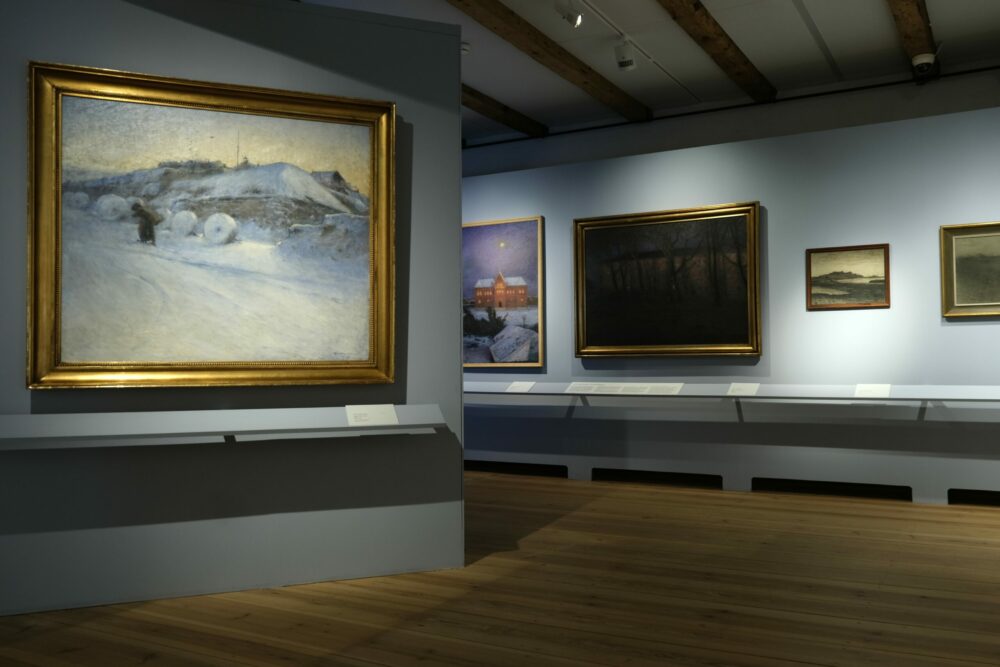14. The Varberg School Art Colony
This exhibition showcases the work of three artists who spent several years in Varberg in the 1890s. Richard Bergh, Nils Kreuger and Karl Nordström founded an art colony in Varberg that became known as the Varberg School. The trio mainly painted landscapes, featuring the city of Varberg and the surrounding countryside. Their art is characterised by the kind of idyllic national romanticism that was so in vogue in Sweden in the 1890s.
But why did these artists move to Varberg? None of them had been born or grew up here, after all. The three met when they were young men, at an art academy in Stockholm in the mid-1870s. Upon completing their education, they travelled south, just like many other artists of their generation, living and studying in France for several years. The painters got the opportunity to exhibit their work at France’s annual Salon and visited other exhibitions and museums in Paris. This introduced them to emerging art movements like impressionism, synthetism and symbolism, all of which influenced them. Every summer, they travelled eighty or so kilometres south to the village of Grez-sur-Loing, where they founded an art colony with fellow artists from Scandinavia and England. They would spend their time painting and enjoying each other’s company.
After some time in France, most artists returned to Sweden, many of them settling in the countryside. It wasn’t an easy transition: the artists were forced to change the entire way they worked, because the light in Sweden, the seasons and the available motifs were so different.
Nils Kreuger and his family moved to Varberg as early as 1887; the Nordströms and Berghs followed in 1893. In the autumn of that year, H.R.H. Prince Eugene, who was a painter himself, wrote to his friend Richard Bergh, referring to the latter’s art colony as ‘l’école de Varbère’ or ‘the Varberg School’, a name it has retained ever since.
During the time when the Varberg School was active, many of the era’s most famous artists, writers and musicians, including the painters Karin and Carl Larsson, Emma and Anders Zorn, and Hanna and Georg Pauli, visited the city the art colony was named after. Bergh, Kreuger and Nordström themselves honed their artistic style in Varberg, painting outdoors (en plain air) in a naturalist way, drawing their inspiration and motifs from their immediate surroundings. Moved by the scenery of Halland and life in the seaside town, they painted evocative landscapes that are now seen as some of the most significant works of the era – and an important part of Swedish art history. The three artists lived together in Varberg from 1893 to 1896; later, they all moved to Stockholm.

